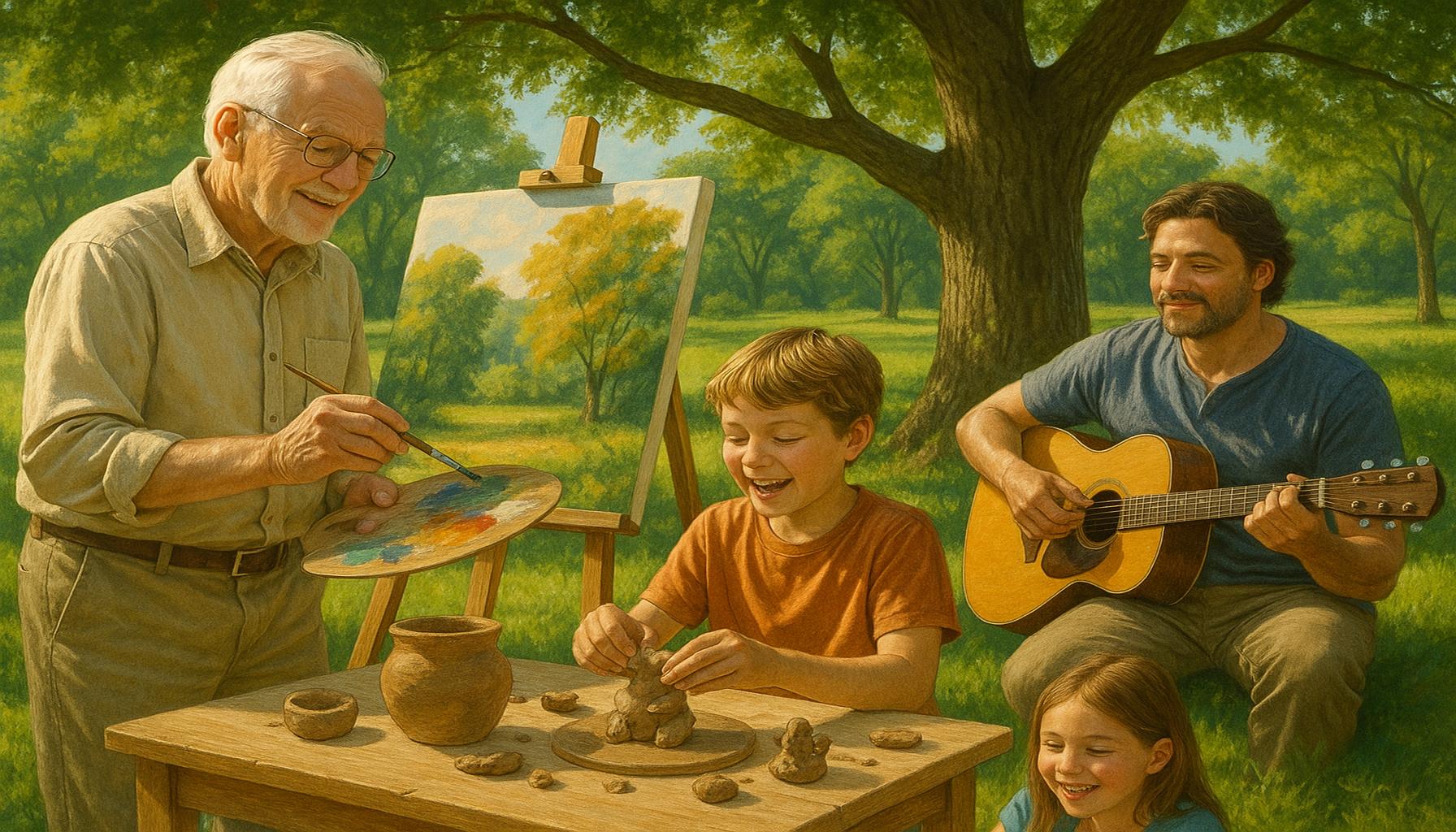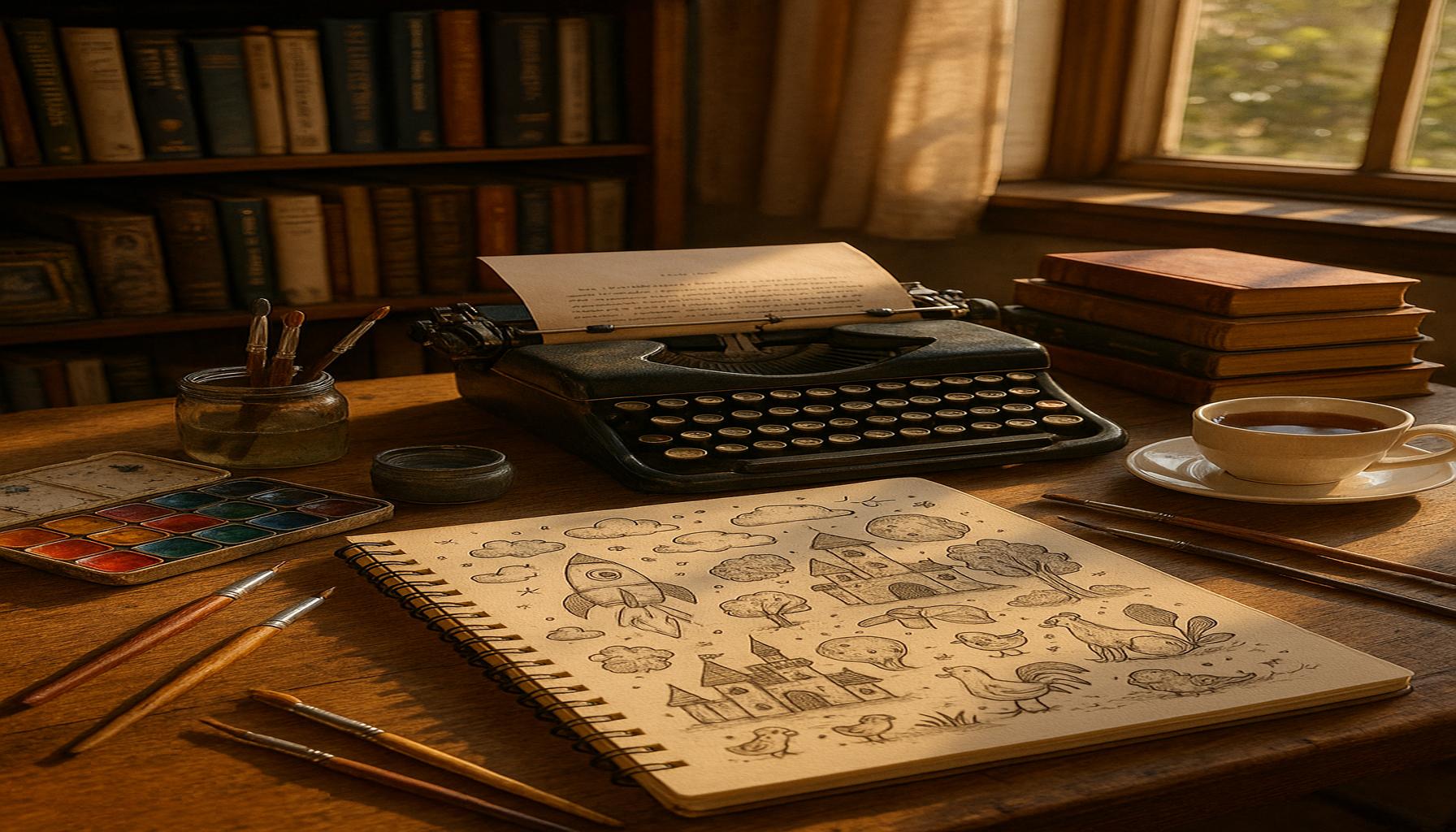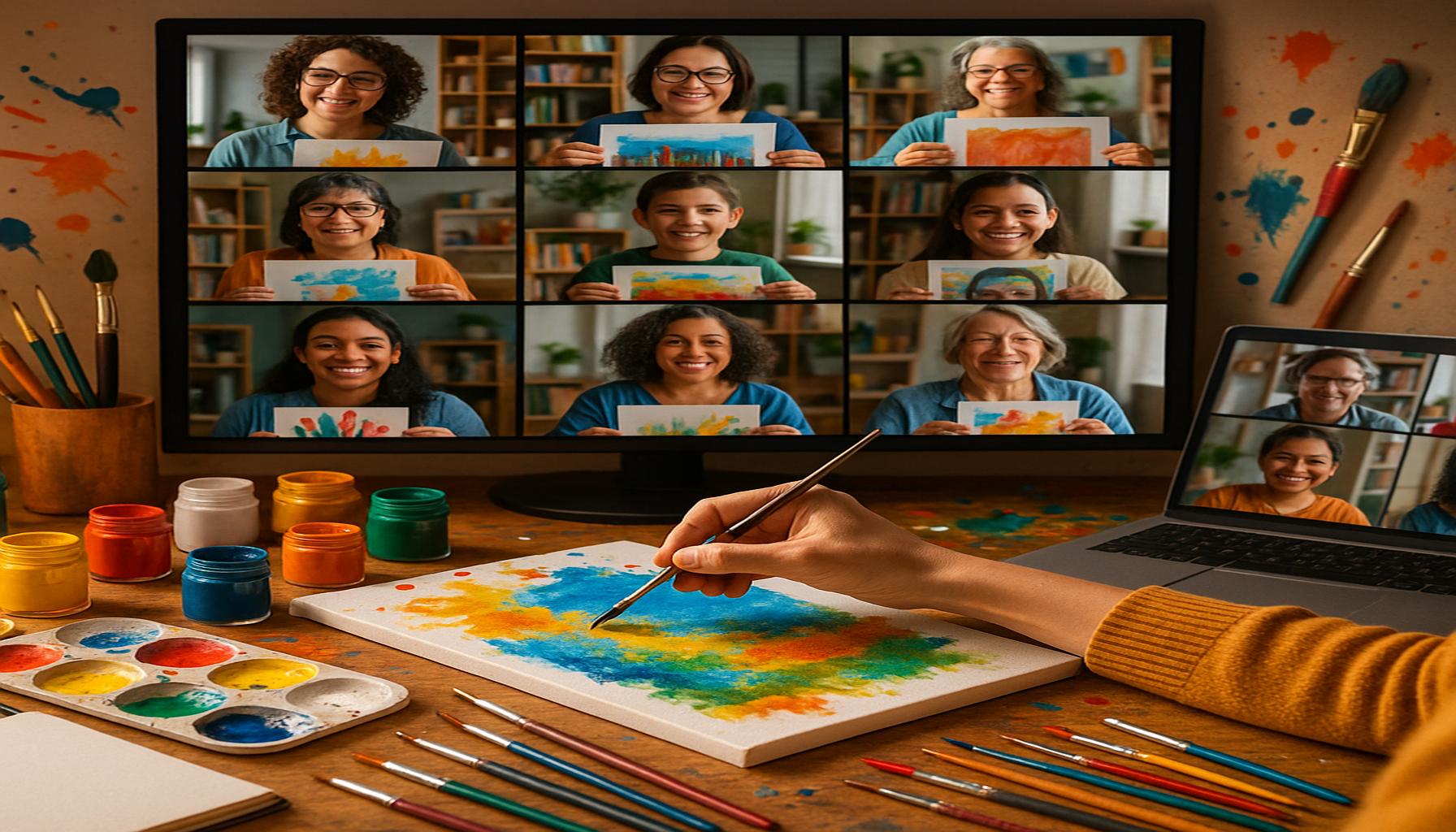The Art Therapy: Psychological Benefits of Painting and Drawing at Home
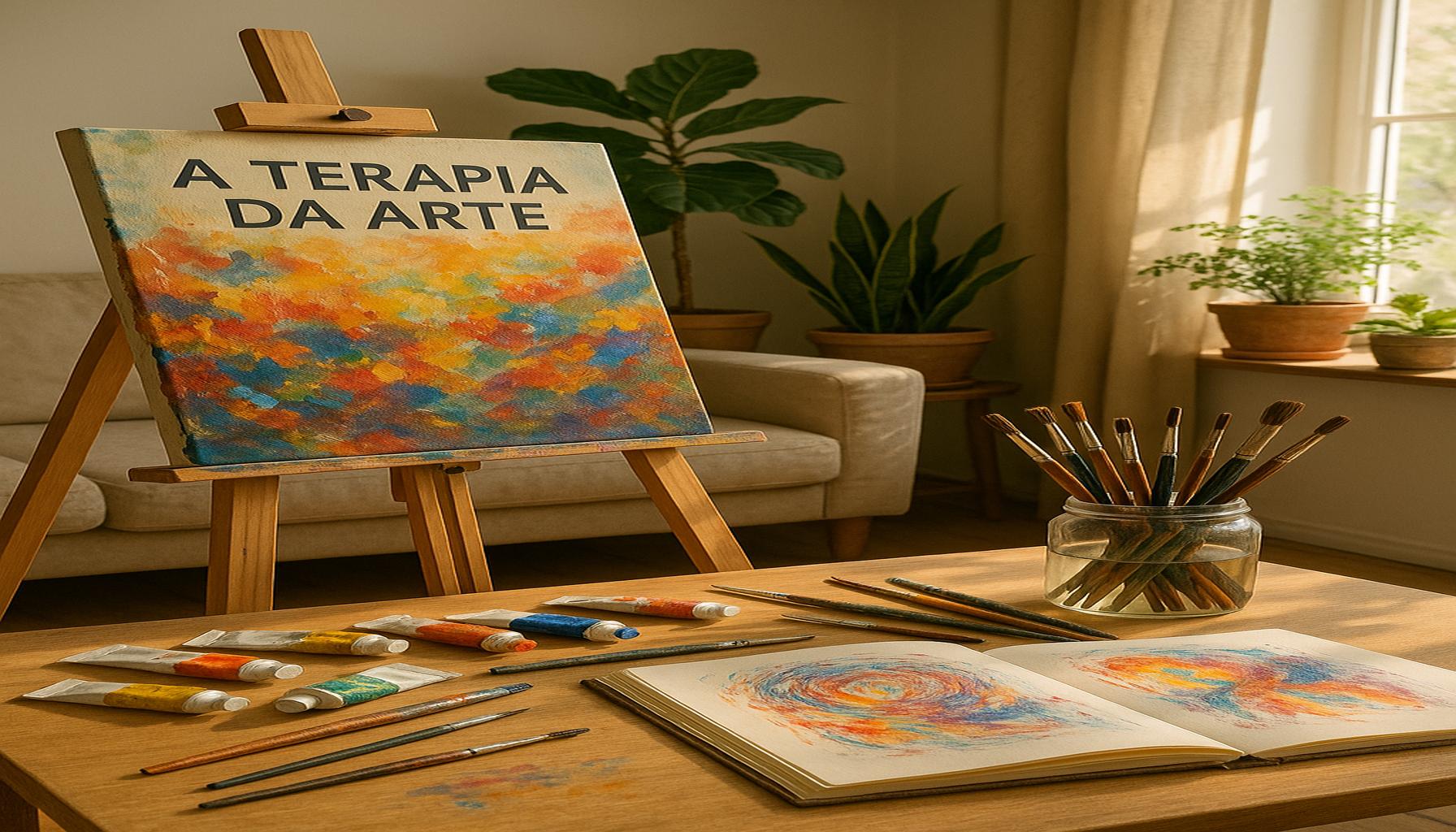
Exploring the Healing Power of Art Therapy
Art therapy transcends mere creativity; it is a sophisticated approach that harnesses the power of artistic expression for emotional and psychological healing. Through activities such as painting and drawing, individuals can engage in a transformative experience that not only nurtures their creative spirit but also fosters a deep level of self-discovery. This practice creates a secure space where one can delve into their emotions, leading to significant personal insights and emotional growth.
Scientific research supports the notion that art activities can yield substantial therapeutic benefits. These advantages range from improving mental health to providing tools for better emotional regulation. For instance:
- Stress relief: Engaging in painting or drawing can serve as a powerful form of meditation. The act of applying color to canvas or sketching lines can quiet the mind, similar to mindfulness practices. A study from Drexel University found that just 45 minutes of creative activity can lead to lower cortisol levels, which is known as the stress hormone.
- Emotional expression: For many, art presents an avenue to express feelings that are difficult to articulate. Some individuals find that colors and shapes speak to their emotions better than words ever could. For example, a person grappling with grief may use dark colors to convey their sorrow, while someone experiencing joy might opt for vibrant hues, allowing for a personal narrative to unfold through their artwork.
- Boosted self-esteem: The sense of achievement derived from finishing an artwork can greatly enhance self-esteem. This process encourages individuals to take pride in their creative capabilities, promoting a positive self-image. Many therapists report that clients often leave their sessions feeling a renewed sense of purpose and accomplishment after completing an art piece.
Creating art in the comfort of one’s home brings these therapeutic benefits closer to those seeking relief from daily stressors. With the rising demand for accessible coping mechanisms, art therapy continues to gain traction across the United States. Whether one finds solace in doodling in a sketchbook, layering colors on a canvas, or crafting unique sculptures, the potential for transformative change is immense.
In major cities like New York, Los Angeles, and Chicago, local community centers and online platforms offer virtual art therapy sessions, making this healing practice available to a broader audience. As society continues to embrace the importance of mental health, art therapy stands out as an innovative and effective approach to support well-being.
DISCOVER MORE: Click here to dive into essential tips
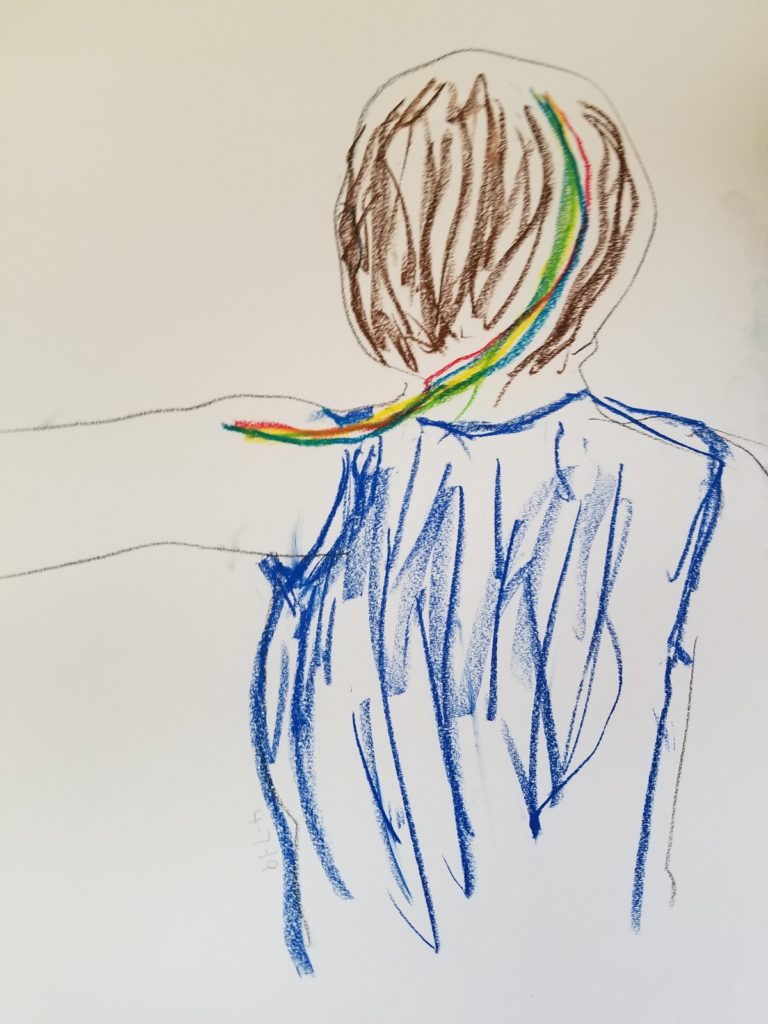
Unleashing Creativity for Mental Wellness
As the world grapples with challenges related to mental health, many individuals are turning to innovative methods for relief. One such method is art therapy, which offers unparalleled psychological benefits through the simple act of painting and drawing at home. Engaging in creative activities not only fosters a sense of accomplishment, but it also strengthens the mind’s ability to process complex emotions.
Research consistently underscores the importance of creativity in enhancing mental well-being. Art therapy promotes a unique form of self-exploration, where individuals can communicate their feelings without the constraints of language. This expressive freedom allows for deeper reflection and understanding of one’s emotional landscape.
- Enhanced Emotional Intelligence: By creating art, individuals learn to connect with their emotions on a deeper level. This process harnesses the notion that self-expression leads to emotional awareness, helping those who may struggle to articulate their feelings find the words they need.
- Physical Benefits: Engaging in art-making can also have physiological advantages. The act of creating boosts dopamine production, which can improve levels of happiness and motivation. Additionally, the tactile experience of handling different materials can serve to ground individuals, offering a sensory experience that is both calming and exhilarating.
- Cognitive Development: Painting and drawing require concentration and focus, skills that can enhance overall cognitive functioning. Engaging with art stimulates brain regions involved in planning, problem-solving, and critical thinking, ultimately fostering a more agile mindset—a vital asset in navigating everyday challenges.
Moreover, the accessibility of art therapy makes it an appealing choice for those hesitant to seek traditional forms of counseling. With the comfort of being in one’s own space, individuals can create without the constraints typically associated with formal therapy. Simple supplies such as crayons, paints, or even digital art tools can be utilized to initiate this therapeutic journey.
The rise of virtual art therapy platforms further underscores the growing recognition of the importance of creative healing methods. Through online workshops, individuals can connect with licensed art therapists who guide them through structured sessions, ensuring that they reap the full benefits of art as a healing mechanism. Communities across the United States are now tapping into this resource, bringing individuals together to share their experiences and foster support through the creative process.
Art therapy does not require prior experience or artistic skill; it is fundamentally about the journey and the emotions expressed along the way. As this transformative practice continues to gain popularity, one fact remains clear: the act of creatively expressing oneself at home can be a powerful catalyst for mental well-being and emotional recovery.
| Key Aspect | Description |
|---|---|
| Emotional Release | Through painting and drawing, individuals can express feelings that may be difficult to articulate verbally, providing a much-needed cathartic outlet. |
| Stress Reduction | Engaging in artistic activities can significantly lower stress levels, allowing for mindfulness and improved mental clarity. |
| Enhanced Creativity | Regular practice in art fosters not only skill development but also innovative thinking, which can positively affect daily problem-solving. |
| Self-Discovery | Art can serve as a tool for individuals to explore their inner thoughts and identity, leading to greater self-awareness. |
The psychological benefits of painting and drawing at home extend beyond simple enjoyment or creativity. Engaging in these activities promotes lower anxiety levels, fostering a sense of calm and well-being. With art being an accessible practice, individuals can unlock creativity while also finding a unique method for self-expression and emotional exploration. The soothing powers of art therapy can nurture resilience, providing strength to navigate life’s challenges.
DIVE DEEPER: Click here to discover the evolution of craft techniques
Connecting Through Community and Self-Discovery
The social aspect of art therapy also plays a crucial role in enhancing mental well-being. As individuals embark on their creative journeys, sharing their art with friends or through online forums can create a sense of community and belonging. Platforms such as Instagram and Facebook have become popular venues for users to display their artwork, connecting with like-minded individuals and fostering support systems that encourage continuous self-expression. This process not only aids in building relationships but also reinforces the value of vulnerability in sharing personal experiences through art.
Furthermore, art therapy allows individuals to engage in a form of mindfulness that can reduce anxiety and stress. By concentrating on the creative process, individuals are invited to immerse themselves in the moment, shifting their focus away from negative thoughts or external pressures. This mindful engagement cultivates a sense of peace, providing an opportunity for personal reflection while also managing overwhelming emotions. Studies indicate that just 45 minutes of artistic activity can significantly decrease cortisol levels, the hormone associated with stress, thus presenting tangible physiological benefits.
In addition to the emotional and mental advantages, engaging in art therapy prompts brain development and neuroplasticity. Research suggests that creative activities stimulate neurogenesis, the process by which new neurons are formed in the brain. This neuroplasticity allows individuals to create new pathways for thought and behavior, promoting flexibility in thinking. Whether it’s a simple doodle or an elaborate painting, every stroke contributes to the continuous evolution of brain function and resilience.
- Personal Space for Healing: Art created in the comfort of home allows individuals to set their own pace and explore their unique emotions without external judgment. This nurturing environment is essential for those who may feel uncomfortable in traditional therapy settings.
- Diversity of Mediums: While one might assume art therapy revolves solely around paintbrushes and canvases, the range of mediums is vast. Individuals can explore collage-making, sculpture, or digital art, broadening their creative horizons and discovering new avenues for expression.
- The Power of Journaling: Many art therapists advocate for the integration of visual arts with journaling. Creating a visual diary combines written reflection with drawing or painting, enhancing self-awareness and making the healing process more comprehensive.
The emerging trend of artful activism is another fascinating aspect of home-based art therapy. Many individuals use their creativity as a powerful voice for social change, channeling personal struggles into artistic expressions that advocate for mental health awareness or social justice. This aspect not only contributes to personal healing but amplifies community voices, creating a wave of collective expression that can grow into a movement.
Research conducted by institutions such as the American Art Therapy Association underscores the efficacy of art therapy for diverse populations—ranging from children to the elderly, and even veterans. With growing acceptance and recognition, institutions in the United States are investing in training more art therapists, looking to address the increasing mental health needs brought on by the current social climate.
As individuals continue to explore the psychological benefits of painting and drawing at home, they not only tap into their inherent creativity but actively participate in a transformative process that enhances their mental health, emotional intelligence, and social connections. This multifaceted approach to well-being serves as a reminder of the powerful synergy between art and personal healing.
DISCOVER MORE: Click here to dive into the world of street photography
Conclusion: Embracing Creativity for Mental Wellness
In recent years, the significance of art therapy has gained considerable attention, especially as individuals seek ways to foster mental health in the comfort of their homes. Engaging in creative activities such as painting and drawing not only provides a cathartic outlet for emotions but also serves as a powerful tool for self-discovery and personal growth. By embracing art therapy, individuals can explore their innermost thoughts while enhancing their emotional intelligence.
The multifaceted benefits of creating art at home extend beyond mere enjoyment; they facilitate mindfulness and promote a sense of belonging through community engagement. Whether it is sharing creations on social media or participating in local art groups, these interactions can transform the solitary aspect of art-making into a communal experience. This connection is essential, especially in a time when social distancing has become a norm.
Moreover, the positive effects on brain health cannot be overlooked. Research indicates that artistic expression sparks neuroplasticity, allowing individuals to adapt and think creatively in their daily lives. The act of creating, be it through traditional mediums or exploring new forms, ensures constant evolution and resilience in facing life’s challenges.
Ultimately, art therapy is more than just a creative pastime; it is a holistic approach to mental health that encourages individuals to lean into their vulnerabilities, celebrate their uniqueness, and harness the therapeutic power of creativity. As awareness of these benefits grows, art therapy will undoubtedly carve out a significant place in our collective journey towards improved mental well-being, inviting everyone to unleash their artistic potential and discover the healing within.
